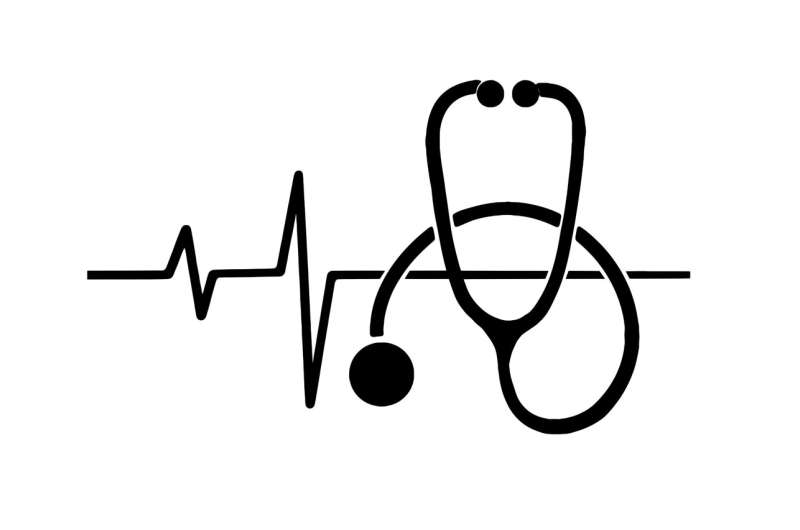
Women in the UK continue to be underdiagnosed and under-treated for cardiovascular diseases, a recent statement from the British Cardiovascular Societies has concluded. While there are many reasons for this, part of the problem is that cardiovascular disease is still seen as a “man’s condition.”
This is troubling, as cardiovascular diseases can look very different in women than they do in men. Recognizing these differences—and why they exist—is essential to improving diagnoses of cardiovascular disease in women and saving lives.
There are many differences in the way the heart looks and functions between men and women.
Numerous studies have shown that males typically have larger hearts than females. Some of the chambers within the heart are also smaller in women.
Males also tend to have thicker heart musculature than their female counterparts. Women’s hearts tend to pump faster than a man’s to compensate for their smaller size—though men’s hearts eject more blood with each pump.
The diameter and length of blood vessels are also reportedly smaller in females than in males.
These differences in the anatomy and physiology of the cardiovascular system are directly reflected in the prognosis and progression of heart disease.
Diagnosing heart disease
Heart disease is the leading cause of death in men and women worldwide, which includes the UK. It can develop and present in dramatically different ways across the sexes due to their anatomical and physiological differences. Yet many of the symptoms and tests used to diagnose a heart attack have been developed based on what men experience. This has serious repercussions for women.
Until recently, the typical symptom of a heart attack that doctors and health workers would look out for in patients was chest pain. Though there are other symptoms, this is usually what men report experiencing when they have a heart attack.
But chest pain may not always be the main sign of a heart attack in women. A 2023 review found that, in addition to chest pain, women who’d had a heart attack reported experiencing other “atypical” symptoms—such as nausea, vomiting, dizziness, indigestion, upper back or belly pain or excessive, unexplained sweating.
But the review found these symptoms were hardly attributed to a heart attack and patients were usually misdiagnosed.
Two tests commonly used to diagnose a heart attack also aren’t as effective in women.
The cardiac troponin test measures circulating levels of troponin—a protein released in the blood when a heart attack has damaged the heart muscle. Higher levels of troponin mean more damage, which indicates a heart attack. But research shows females can have decreased levels of this protein, or levels that are below what would be detected by this test—even when they were experiencing a heart attack.
Finally, the gold standard for heart attack diagnosis is cardiac catheterization. This procedure uses a thin tube threaded through the blood vessels to the heart to look for blockages in large arteries. Yet, as mentioned, women’s blood vessels tend to be smaller in diameter than men’s and also more likely than men to experience a buildup of plaque in the smallest arteries.
So a diagnosis may be missed in females due to this fact, as the test may not be the most appropriate way to diagnose heart disease in women. Around 50% of women presenting with heart disease symptoms show a blockage after cardiac catheterization. Women are also less likely than men to be recommended for cardiac catheterization.
The notion that men are more at risk of cardiovascular diseases has even meant that, historically, women have been underrepresented in clinical trials exploring the efficacy of heart failure drugs. Women are even less likely to be referred for cardiac rehabilitation or revascularization (a medical procedure that restores blood flow to the heart) compared to men.
There have been some efforts made more recently by doctors and nurses to tailor diagnosis and treatment based on each patient. This includes making subtle calibrations in pacemakers, small variations during angioplasties (which widen blocked arteries) and even using an intravascular ultrasound to better detect heart disease in women.
Numerous studies and clinical trials are also ongoing, with focus on how to define and add sex-related indicators to current risk assessment and management strategies with respect to cardiovascular diseases.
Doctors and caregivers recognizing the differences in how men and women present with cardiovascular diseases is a good start. But it’s clear far more work still needs to be done to address the many reasons behind these differences in care.
This article is republished from The Conversation under a Creative Commons license. Read the original article.![]()
Citation:
Why women are still being underdiagnosed with heart disease (2024, October 4)
retrieved 5 October 2024
from https://medicalxpress.com/news/2024-10-women-underdiagnosed-heart-disease.html
This document is subject to copyright. Apart from any fair dealing for the purpose of private study or research, no
part may be reproduced without the written permission. The content is provided for information purposes only.


